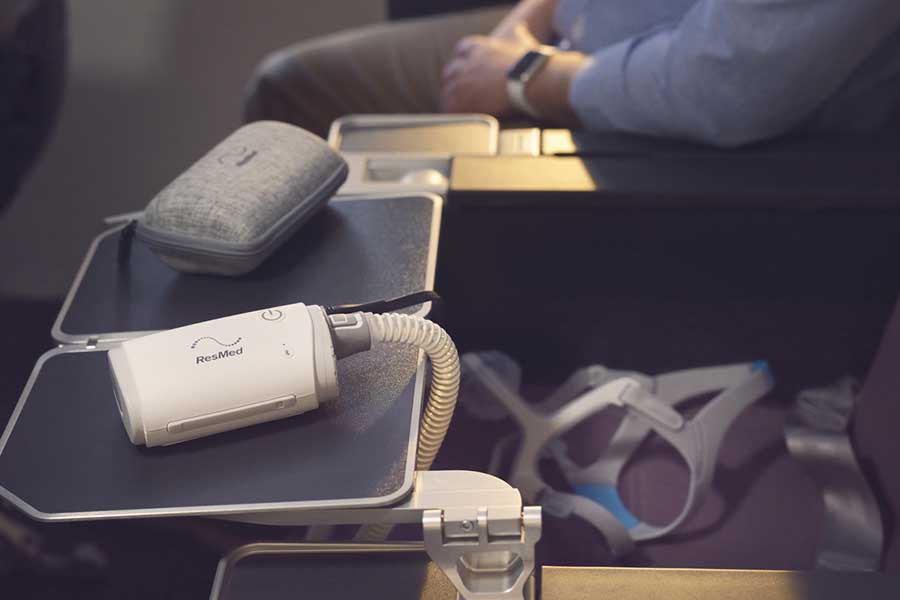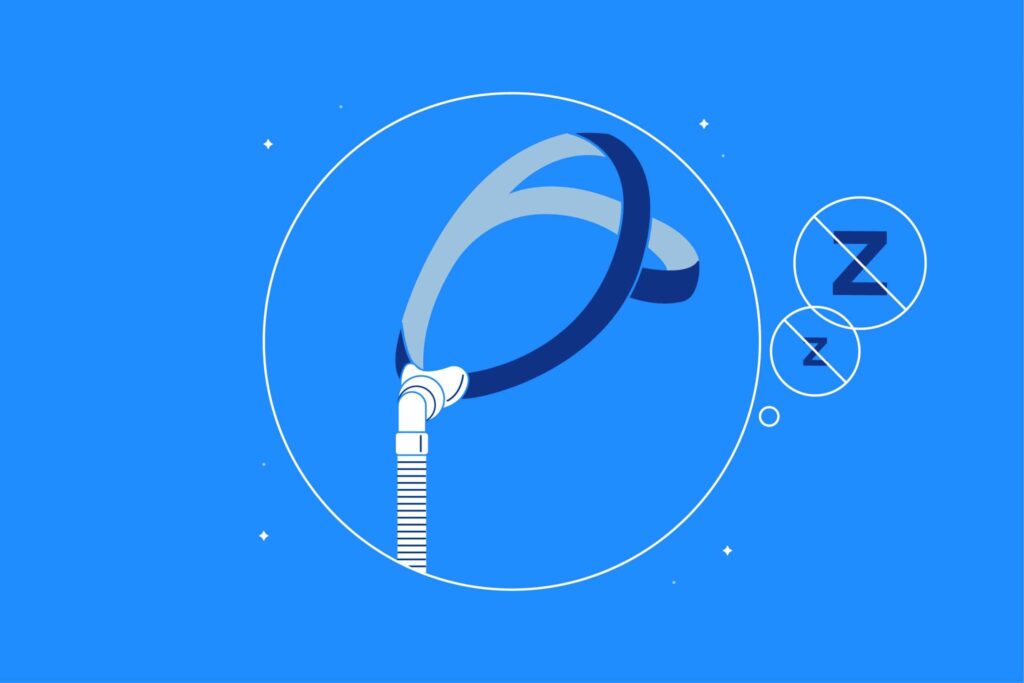Those who need a continuous positive airway pressure (CPAP) machine to fall asleep may feel anxious about taking a trip. It’s true that taking your CPAP mask and machine on the road is much less complicated than you might imagine; with a little bit of planning and the help of the checklist and suggestions provided here, you can keep up your CPAP compliance and still have a restful night’s sleep.
Here are top things to remember before leaving home with your cpap mask and machine, regardless of how you plan to travel:
- Refresh Your Equipment – Before leaving, be sure that your CPAP mask has all of its worn parts replaced with brand new ones. Replacing worn parts like the tube, cushion, and air filter before leaving for an extended period of time will make maintenance easier and lower the risk of a critical component failing.
- You should clean your equipment completely and let it air dry before packaging it away. When not in use, keep your CPAP mask, tubing, and humidifier completely dry to prevent the growth of mould and mildew.
- We advise that you check your CPAP mask, machine, tubing, and any other equipment (such as a backup power source) two full weeks before your travel. Check for any deterioration or damaged parts that could cause an inconvenience on your vacation.

- Although bringing a lot of additional supplies can get in the way, you should definitely make room in your suitcase for a spare CPAP mask cushion, some machine filters, and/or an alternative set of headgear just in case something goes wrong. Having backup supplies will help you keep your therapy on track in the event that something breaks, gets eaten by your in-laws’ pet, or goes missing.
- It is highly recommended that CPAP users should have a copy of their prescription with them when they travel. While it’s highly unlikely you’ll ever use it, having it on hand will make you very happy if the perfect (or, more properly, incorrect) conditions occur.
You probably won’t need to bring your prescription with you on your trip, but if you need to order any replacement equipment or supplies, you’ll want to have it handy.
- You should bring your own water because only distilled water will keep your CPAP machine from getting calcified or mineralized. It’s not a good idea, and depending on where you’re going, it might not even be possible to use tap water in your CPAP machine’s humidifier.
If you want to feel safe while travelling with your CPAP machine, bring your own supply of distilled water.
- Carry Simple Cleaning Tools with You – CPAP wipes are convenient because you don’t have to constantly submerge your equipment in a sink full of hot, soapy water.
- Carry an Extra Source of Energy – Although a backup battery for your CPAP machine isn’t typically required, having one can ensure that you can continue your therapy even if you’re in an area where the reliability or accessibility of energy is unknown.
See Also: Protecting CPAP Mask and Hose from CPAP Rainout - You can do more with DC converters and extension cords by enabling you to use 12V DC outlets, some solar panel alternatives, and CPAP backup batteries like the EXP48 and EXP96 Pro, a DC converter that expands the flexibility of your therapy. If you bring an extension cord with you, you won’t have to worry about being restricted by the length of your tubing and power cord, or about finding an available outlet.
- Get a Medical Alert Wallet Card – Even if you aren’t going anywhere, it’s a good idea to have a medical alert wallet card in case of an emergency. This is especially important for solo travellers. Keep a medical alert card in your wallet so that first responders can learn more about your health and better care for you if you become unresponsive.

For those who need a CPAP mask or device when flying, here are eight helpful hints
Here are some information that is specific to your next flight! With any luck, these eight pointers will make your next flight more bearable while using a continuous positive airway pressure device.
- Pack Your CPAP Machine Away from the Luggage Check – Your CPAP mask and machine are medical equipment and, as such, cannot be included in the baggage weight limit. You should never be without the device, as its delicate nature necessitates constant monitoring.
- Invest in a Travel Case Most new CPAP machines now come with a travel case designed specifically for that model. If yours didn’t, you can avoid having your CPAP equipment included as checked luggage by bringing it on the plane in a separate suitcase. You’ll be thankful for the extra space in your carry-on, even if it’s just an old duffel bag.
- If you need to use a CPAP mask and machine during in flight, the TSA allows up to 3.4 ounces of distilled water in carry-on bags. However, the TSA advises that you keep your liquids to “appropriate proportions,” so you should probably restrict the amount of distilled water you pack in your checked bag even though there is technically no limit.
- Archive Copies of Vital Records Convenient: TSA agents and airline staff have received extensive training to recognise medical equipment, including CPAP machines. Most new CPAP machines are allowed for use on aeroplanes, but having proof of your manufacturer’s FAA certification status is helpful in case any questions or concerns arise.

If your CPAP mask, machine, or equipment gets damaged in transit, having a copy of your prescription on you can help you get replacements. If you need to replace some supplies or machine components while on the road, having your prescription on hand will be a huge help.
- Know Your Seating Situation Before Takeoff! SeatGuru, a tool available on TripAdvisor, can help you scope out your plane’s seating situation before you take off. Find out which seats have the most legroom and which have access to power outlets for your electronic devices if you want to use them during flight.
- Traveling Overseas by Plane? Don’t forget the plug adapter! Modern CPAP machines typically detect and compensate for higher voltage outlets automatically. However, be sure your CPAP machine’s power source can handle at least 220 volts by using a country-specific converter.
- Make a Reservation 48 Hours in Advance – Even though no domestic flight can legally prevent you from using your CPAP machine, it’s still a good idea to research the airline’s guidelines for doing so. For a stress-free flight, be sure to call your airline at least 48 hours before takeoff with any questions or concerns; we’ve included some of the more typical regulations here.
Note that if you intend to use your CPAP machine during the travel, certain airlines will insist that you bring a battery with a capacity greater than your flight time.
- Some portable CPAP machines, such the ResMed AirMini and HDM Z2, include waterless humidification are options that can help you conserve room and travel lighter if you don’t want to bring distilled water with you.

